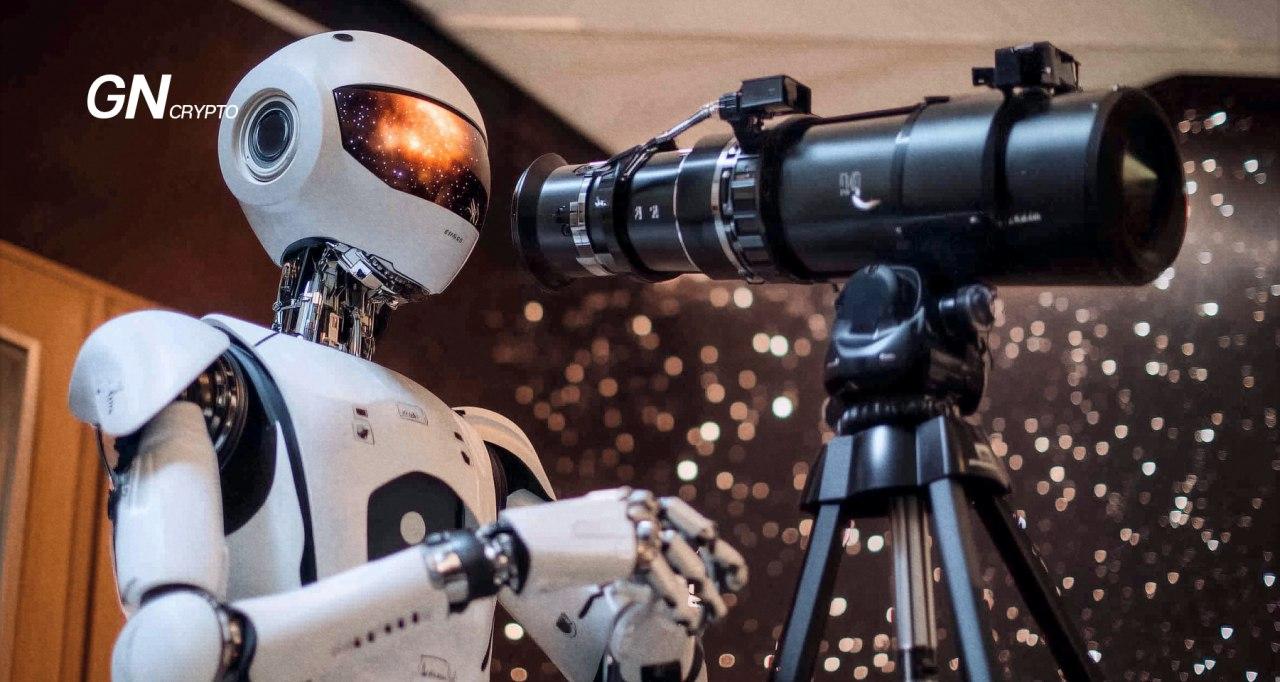Can AI Help Solve Cosmic Mysteries?

The Universe has puzzled humanity for years. Today, despite technological progress and scientific discoveries, there are still big questions unanswered. Is there life outside the Earth, how and why does space keep expanding, and what about multiverses? Maybe AI can help solve the mysteries.
On this page
For space researchers, AI can be a significant assistance due to its various “skills”. The technology can mimic human intelligence, process data, analyze and spot patterns, and learn over time.
AI is trained to recognize images of the Moon, Earth, stars, asteroids, and other celestial objects.
Here’s how it works:
Scientists feed the system data from telescopes, detectors, colliders, and other equipment. AI then analyzes the vast volumes of information, helping to test hypotheses and uncover small details that a scientist's eye may have missed.
Another key application of AI in space exploration is its ability to navigate independently. When integrated into rovers, satellites, or spacecraft, AI can investigate the environment, avoid obstacles, and analyze data in real time. Now, more about this with examples and further details.
NASA’s Perseverance Rover Integrates AI to Search for Signs of Past or Present Life
Perseverance, the robot by the famous space agency, has a special mission: look for signs of life on Mars, collect samples of rock and soil, and bring evidence to Earth for study.
The geologist landed on the Red Planet for the first time in February 2021. To be more concise, on the area called Jezero Crater. Perseverance uses NASA’s AEGIS AI system (Autonomous Exploration for Gathering Increased Science) to investigate the location without relying on constant Earth-to-Mars communication.
Perseverance’s work soon bore its fruits. Due to the images the rover took, scientists confirmed that Jezero was a lake around 3.7 billion years ago. Evidence includes massive rocks and a river delta outcrop in the area.
This way, Perseverance solved one of the biggest mysteries for scientists: whether Jezero was a lake. This matters because further clues and samples from the crater’s environment can help scientists figure out the evolution of climate change on the planet and if it has or had any inhabitants.
CIMON Is Like Siri or Alexa but in Space
Are you familiar with CIMON (Crew Interactive Mobile Companion), a robot that assists astronauts in their space missions? CIMON was created by Airbus, the German Aerospace Center, IBM, and the European Space Agency: it can recognize speech and complete tasks it receives.
With a round shape and a cartoon face, CIMON was the first AI-equipped robot to fly to space. CIMON-1 made its 90-minute debut together with German ESA astronaut Alexander Gerst to show its capabilities on November 15, 2018.
Then, the intelligent companion showed it could reduce the astronaut’s stress by displaying and explaining information needed for experiments. CIMON is able to take photos and videos, search for objects, and document experiments.
The system can receive voice commands like Siri, Alexa, and other voice assistants. After the first test session with Alexander Gerst, CIMON completed a number of other tests on the International Space Station (ISS).
In December 2019, the new version of the intelligent assistant CIMON-2 was launched.
Compared to its predecessor, CIMON-2 has more sensitive microphones, faster speech processing and overall, improved operational performance. In 2024, CIMON continues to be a crew member for astronauts to improve machine-human interaction in space.
Astronaut Alexander Gerst with AI assistant CIMON in 2018. Source: ESA/NASA.
AI Helps to Understand Black Holes by Creating and Improving Images
Black holes are mysterious objects that are invisible to telescopes because they don’t emit or reflect light. To study black holes, scientists mainly examine the environment around them. Here, AI algorithms are a huge help.
In 2019, AI created the first-ever image of a black hole.
Here’s how this happened:
The Event Horizon Telescope (EHT) project, which links multiple telescopes around the globe, was able to capture data from a supermassive black hole located in the galaxy M87.
During the observation, multiple radio telescopes synchronized to act as one large telescope. The data collected was extremely complex, and to make sense of all the information, scientists used AI algorithms. By putting all the information together and analyzing it, AI could generate an image of the black hole.
The image of M87 revealed that the black hole is larger than the Sun, is spinning, spinning, and scientists assume it has a powerful magnetic field around it. Besides understanding black holes, this finding can help provide a bigger picture of the universe, including how black holes form, grow, and influence their galaxies.
In 2023, the image resolution of M87 was improved through machine learning to enable a closer look at M87.
And it truly looks mysteriously stunning.
How Close Are We to Solving Cosmic Mysteries
One thing is for sure: with developments in AI, robotics, and astronomy, we are getting closer to solving the secrets of the Universe. The use of technology in Mars Rovers and capturing images of objects like black holes are big steps in that direction.
However, there are still major challenges, such as connectivity issues, interplanetary communication, software errors, and the volatile conditions of space.
It’s still unknown how long cosmic mysteries will take to solve and which of them will remain a mystery.
The content on The Coinomist is for informational purposes only and should not be interpreted as financial advice. While we strive to provide accurate and up-to-date information, we do not guarantee the accuracy, completeness, or reliability of any content. Neither we accept liability for any errors or omissions in the information provided or for any financial losses incurred as a result of relying on this information. Actions based on this content are at your own risk. Always do your own research and consult a professional. See our Terms, Privacy Policy, and Disclaimers for more details.


























